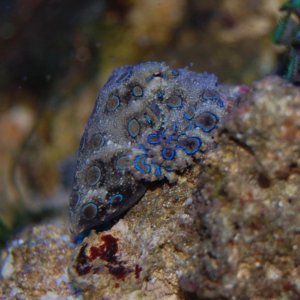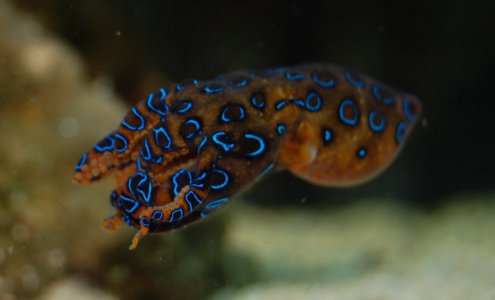Sorry, should have done that in the first place. Please excuse my "newbie-isum".
14 gallon Oceanic BioCube w/ mods (new pump, no bio balls, area is filled with live rock, I still use the stock filter but I also have a set of secondary filters (coarse mesh, fine mesh, charcoal). I do weekly water changes in addition to media changes about every two to three weeks. He has a few hermits and snails as tank mates as well as some polyps and one mushroom (which he seems to avoid for some reason).
I'm also a fine scale model railroader so I made fitted "shield" for most of the back portion of the tank. This covered the filter/LR/pump area, it is made of white styrene plastic and have a little handle to lift it out when needed for maintenance. I also blocked the two wire holes in the back of the tank lid with rubber grommet and if all else fails, some black duct tape (secondary measure).
The only way I can see escape is from the front door if he can get it open, I still need to think of a way to secure it without talking way from the look of the tank, so for now I just put a metal machinist block on top (2lbs!)

We got him from my LFS in West LA. It was not one of those "Oh cool, buy it" type things, we don't do that. We saw him, came home, did days of research and came back to get him.
We've only gotten him to eat fiddler crabs but I've read about a person who got their's to eat frozen silver side bits if feed by tweezers.
I plan to document each day we have him and if he "lives" more than a month I'll make a site with information for those who want to keep one. Not saying that I think they are great pets for all, but I "feel" that we can give him the care he needs to at least live a "good" life while in our care and if the information I log can benefit other Blue Rings, then great! At least we got him and not some person who has no idea about the danger these little guys pose.
Heck, people race motorcycles, sky dive, and crawl into volcanoes. These could all kill you, but if informed, and the risk is acceptable, then why not.
Peter M.
West LA




